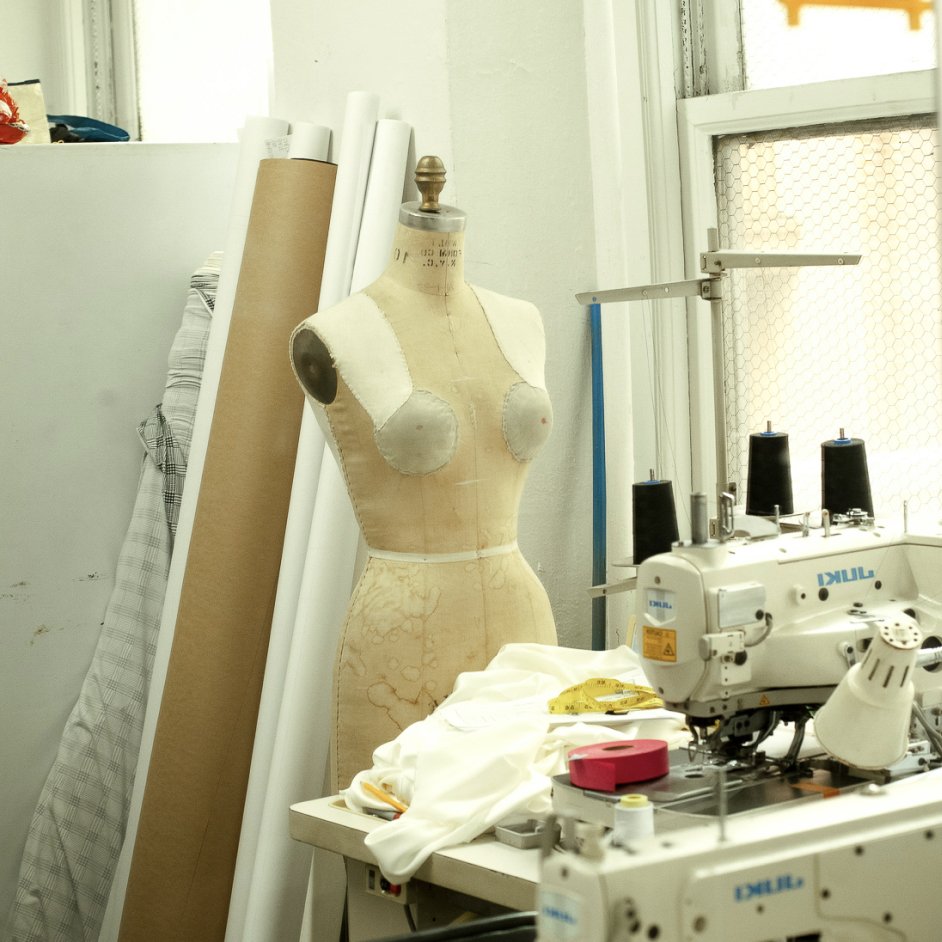A Brief History of Ready to Wear is a 4-part feature exploring the events that led from made-to-order fashion, through the ready to wear revolution, and up to the present problem of fast fashion.
Fashion is an international market of art, an exchange of inspiration, ideas, and industry.
While humans have always adorned ourselves in an act of self-expression, we have not always bought off the rack or shopped online. Fashion wasn’t always fast. In order to understand all of the complexities of the fashion world today, and the greater forces that shape our manner and means of consumption, it is important to understand how our garments come to life.
Where to begin?
Before we can understand what it means to “buy off the rack”, we have to understand the means of production that bring garments to life. Though the question “where do our clothes come from” is much more expansive, we can begin with the foundational blocks and history of clothing construction.
some Terms to Know
Handmade - Garments made by hand mean they are hand-sewn, have hand-sewn elements, or are made with a hand process, rather than in a factory. Handmade garments take longer, but are made with more attention to detail and care.
Bespoke Tailoring - A practice much more popular and commonplace in years past, bespoke tailoring is the process of making clothing to an individual’s specifications and measurements.
Ready to Wear - Made in standardized sizes, is usually mass-produced, and is meant to be purchased and worn immediately, often without alteration. Haute couture refers to high-end, custom clothing made and tailored exclusively for the wearer.
Small-Batch - This is how we produce here at Rule DD. Small batch means producing less than 500 units of an item, but most of our work is in batches of 25 to 200 pieces. We work to minimize waste by producing only what our clients anticipate selling and planning as accurately as we can.
Straight Sizing - Also known as “standard sizes” (ex. from XXS to XXL) are used by manufacturers to streamline the production process and allow for faster production of what the industry considers to be the average or most common sizes. However, straight sizing is limiting and excludes a majority of American women, 68% of whom wear a size 14 or above.
Mass-Produced - This is the production of large quantities of a standardized article by an automated and fast paced mechanical process, often producing items by the hundreds or thousands.
Factory-Made - Similar to mass-produced, and often can be applied to the same processes, factory made means that the garment production occurs in a mechanized factory setting where the garment is made in large quantities, rather than in a handmade production setting.
The History of Modern Production
For the wealthy, prior to the 1800’s, bespoke tailoring for men and seamstresses for women were the norm. Meaning, garments were custom-made to fit individuals and were constructed to the client’s specifications and style, if they weren’t handmade at home. Though tailoring and homemade garments continued to be the standard for decades to come, the first glimpse of mass-produced clothing was in 1812, when U.S. military uniforms were factory-made to meet the demands of war time. The ease and success of creating men’s wear with uniform sizing and materials continued after the end of the war.
The clean lines and construction of men’s wear suited large scale factory production. Men were able to find suits that fit well based on simple foundation measurements, like waist, shoulder, and pant length. Womenswear featured many more complexities, embellishments, and details, along with a more structured style that needed to be fit to each body’s unique measurements, making it incompatible with the manufacturing abilities of the era.
Typically, working class women worked in their free time to craft their wardrobes with pride, and owned very small collections of dresses. Consumption as a whole was incomparable to the unsustainable supply and demands of today. Historically, fashion was slow, with new styles changing by the year, or even slowly over a decade, rather than by the season. Now, we can see fashion change by the day, with some online shops releasing thousands of new styles every day. Not only was production itself slower, but wardrobes were smaller and changed much less frequently.
Ready-to-wear is clothing sold “off the rack” - which means that it is typically mass produced in straight sizes, and can be worn as soon as you buy, without need for personal alterations.
As women’s clothing styles became more simple, without fitted sleeves, waists, and necklines, or the layers and lavish styles of the past, women’s clothing production became significantly less involved. Due to the simpler and more relaxed silhouettes of the mid-19th century, garment workers were able to produce more product, faster and with more ease, causing a shift in the market. Economic hardship and global war time delayed this change further, until 1966 when Yves Saint Laurent released a collection of “standard size” ready-to-wear pieces, in addition to the bespoke couture collection, changing the game for designers across the globe.
The new approach to mass production encouraged the use of cheaper synthetic fibers and with no need for tailoring, more styles became readily available for lower prices. This delivered fashion to working class consumers in an unprecedented way, and led fashion designers to produce more styles for the growing market every year.
Peering into any garment worker’s studio, you can find a variety of specialized craftsmen and tools. From the foundational work of pattern-drafters, sample-makers, and fabric cutters, assembly-clothing production takes time and specialization. Though many garment workers are familiar with each step of the manufacturing process, each step requires careful attention to detail and consistent work. At Rule DD, we return to the tradition of made with care, by focusing on small-batch and localized production right here in Los Angeles. We sew slowly, with consciousness for our workers and our planet.

